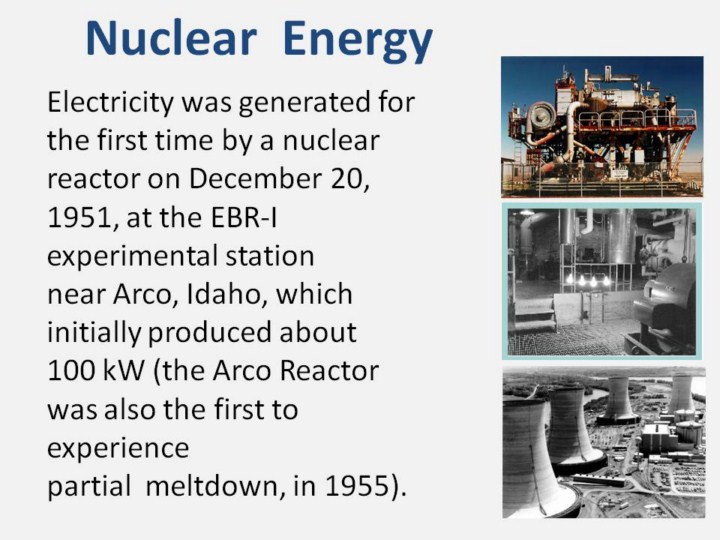| front |1 |2 |3 |4 |5 |6 |7 |8 |9 |10 |11 |12 |13 |14 |15 |16 |17 |18 |19 |20 |21 |22 |23 |24 |25 |26 |27 |28 |29 |30 |31 |32 |33 |34 |35 |36 |37 |38 |39 |40 |41 |42 |43 |44 |45 |46 |47 |48 |49 |50 |51 |52 |53| |54 |55|56 |review |
 |
Electricity was generated for the first time by a nuclear reactor on December 20, 1951, at the EBR-I experimental station near Arco, Idaho, which initially produced about 100 kW (the Arco Reactor was also the first to experience partial meltdown, in 1955). In 1952, a report by the Paley Commission for President Harry Truman made a "relatively pessimistic" assessment of nuclear power, and called for "aggressive research in the whole field of solar energy.” A December 1953 speech by President Dwight Eisenhower, "Atoms for Peace," emphasized the useful harnessing of the atom and set the U.S. on a course of strong government support for international use of nuclear power. The idea behind the breeder is to maximize the useful energy that can be extracted from natural uranium. Inside a nuclear reactor, uranium-238 — the common form of the metal which cannot be used for fuel — can capture neutrons released during fission and transform into plutonium-239. This man-made element can fuel reactors, so breeding makes it possible to use virtually 100 percent of the energy in natural uranium. EBR-I provided the first proof that breeding is possible: On June 4, 1953, the U.S. Atomic Energy Commission announced that EBR-I had become the world's first reactor to demonstrate the breeding of plutonium from uranium. http://en.wikipedia.org/wiki/Nuclear_power#History
|